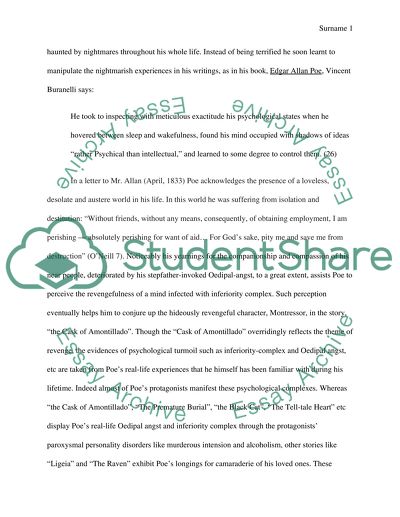Cite this document
(“Psychosomatic Disorders and Traumatic Experiences in Edgar Allan Poes Research Paper”, n.d.)
Retrieved from https://studentshare.org/literature/1398162-psychosomatic-disorders-and-traumatic-experiences-in-edgar-allan-poes-real-life-and-their-influences-on-his-writings
Retrieved from https://studentshare.org/literature/1398162-psychosomatic-disorders-and-traumatic-experiences-in-edgar-allan-poes-real-life-and-their-influences-on-his-writings
(Psychosomatic Disorders and Traumatic Experiences in Edgar Allan Poes Research Paper)
https://studentshare.org/literature/1398162-psychosomatic-disorders-and-traumatic-experiences-in-edgar-allan-poes-real-life-and-their-influences-on-his-writings.
https://studentshare.org/literature/1398162-psychosomatic-disorders-and-traumatic-experiences-in-edgar-allan-poes-real-life-and-their-influences-on-his-writings.
“Psychosomatic Disorders and Traumatic Experiences in Edgar Allan Poes Research Paper”, n.d. https://studentshare.org/literature/1398162-psychosomatic-disorders-and-traumatic-experiences-in-edgar-allan-poes-real-life-and-their-influences-on-his-writings.


